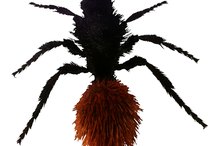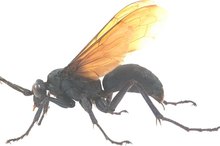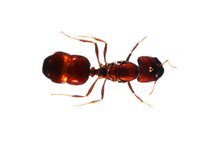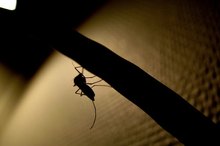What does fact checked mean?
At Healthfully, we strive to deliver objective content that is accurate and up-to-date. Our team periodically reviews articles in order to ensure content quality. The sources cited below consist of evidence from peer-reviewed journals, prominent medical organizations, academic associations, and government data.
The information contained on this site is for informational purposes only, and should not be used as a substitute for the advice of a professional health care provider. Please check with the appropriate physician regarding health questions and concerns. Although we strive to deliver accurate and up-to-date information, no guarantee to that effect is made.
What Happens When a Carpenter Bee Stings?
Carpenter bees have a similar appearance to bumblebees but do not share the same feverish social characteristics. Instead, carpenter bees hide out in nests nestled in the frames of buildings or in trees, according to Penn State, but can be found buzzing around these areas in swarms 1. If a carpenter bee stings you, you may experience the traditional adverse reactions to bee stings, including redness, swelling, asthmatic problems, and even death if you are allergic to bee stings. Seek medical help immediately.
Female Bees
The female carpenter bee is the only sex that will sting a person. However, the female bee is not known to sting frequently. When a person provokes or tries to touch the female bee, she likely will sting. If you are wondering if you have been stung by a female carpenter bee, then you can inspect her abdomen once she is dead. Carpenter bees have black abdomens instead of the bumblebee's characteristic yellow abdomen.
- The female carpenter bee is the only sex that will sting a person.
- When a person provokes or tries to touch the female bee, she likely will sting.
Venom Release
The 10 Most Bizarre Allergies That People Really Suffer From
Learn More
Carpenter bee venom is toxic, which is why it hurts when a bee stings. There are several characteristics of bee venom, including its ability to paralyze the nervous system (neurotoxic), its ability to make the blood capillaries thinner (hemorrhagic) and its ability to destory red blood cells (hemolytic). Bee venom is formed from melittin, a peptide that works as an anti-inflammatory agent; phospholipase, an enzyme that leads to the destruction of cells; and A-Hyaluronidase, an enzyme destroys parts of cells and allows the venom to spread in a person's system.
Immediate Reactions
If you are stung by a carpenter bee, you may notice redness at the sting site and puffiness around the area of the sting. Carpenter bee stings are painful, and the pain may linger for an hour or longer. Every bee sting reacts differently to different people because the stinger releases venom in varying amounts. Immediately place ice on the swelled area and take an antihistamine to dull the pain.
- If you are stung by a carpenter bee, you may notice redness at the sting site and puffiness around the area of the sting.
Serious Reactions
Carpenter Bee Sting Reaction
Learn More
Anaphylaxis may occur if you are allergic to bee stings 2. This is a life-threatening condition brought upon by the allergic reaction to the bee's stinger venom. If you see the stinger in the person's skin, remove it by scraping it away with a credit card rather then using tweezers that can cause the stinger to compress and further release venom. A person who is experiencing anaphylaxis may experience wheezing, nausea, diaherrea, abdominal cramping, fainting, difficulty with breathing or swallowing and anxiety or confusion 2. Call 911 immediately.
What to Do
If someone who has been stung by a carpenter bee begins having an allergic reaction, call 911 immediately. If the person has known allergy medicine -- such as prescription allergy medicine -- then give the person the required amount. Ask the person to lay down flat on a surface. Raise her feet about 1 foot and cover her with a blanket. This helps to prevent the person from going into shock. You should not position the person flat, lift her feet and cover her with a blanket if you suspect that she suffered a back, neck, leg or head injury, according to Medline Plus. If someone is experiencing only redness and nominal pain, then apply ice to the bee sting and take an antihistamine.
- If someone who has been stung by a carpenter bee begins having an allergic reaction, call 911 immediately.
- You should not position the person flat, lift her feet and cover her with a blanket if you suspect that she suffered a back, neck, leg or head injury, according to Medline Plus.
Related Articles
References
- Penn State University: Carpenter Bees
- MedlinePlus: Anaphylaxis
- University of Illinois at Urbana-Champaign: BeeSpotter
- Kleppe, S. "Carpenter Syndrome". National Organization for Rare Disorders, 2015.
- U.S. National Library of Medicine. "Carpenter Syndrome." 2007
Writer Bio
Vera Leigh has worked as a professional freelance writer since 2008. Her work has appeared in "Learn Overseas" and "Grad Source" magazines. In addition, she received an honorable mention in "Newsweek's" My Turn contest. She has written features for nonprofits focused on literacy, education, genomics and health. In her spare time, Leigh puts her English major to use by tutoring in grammar and composition.







